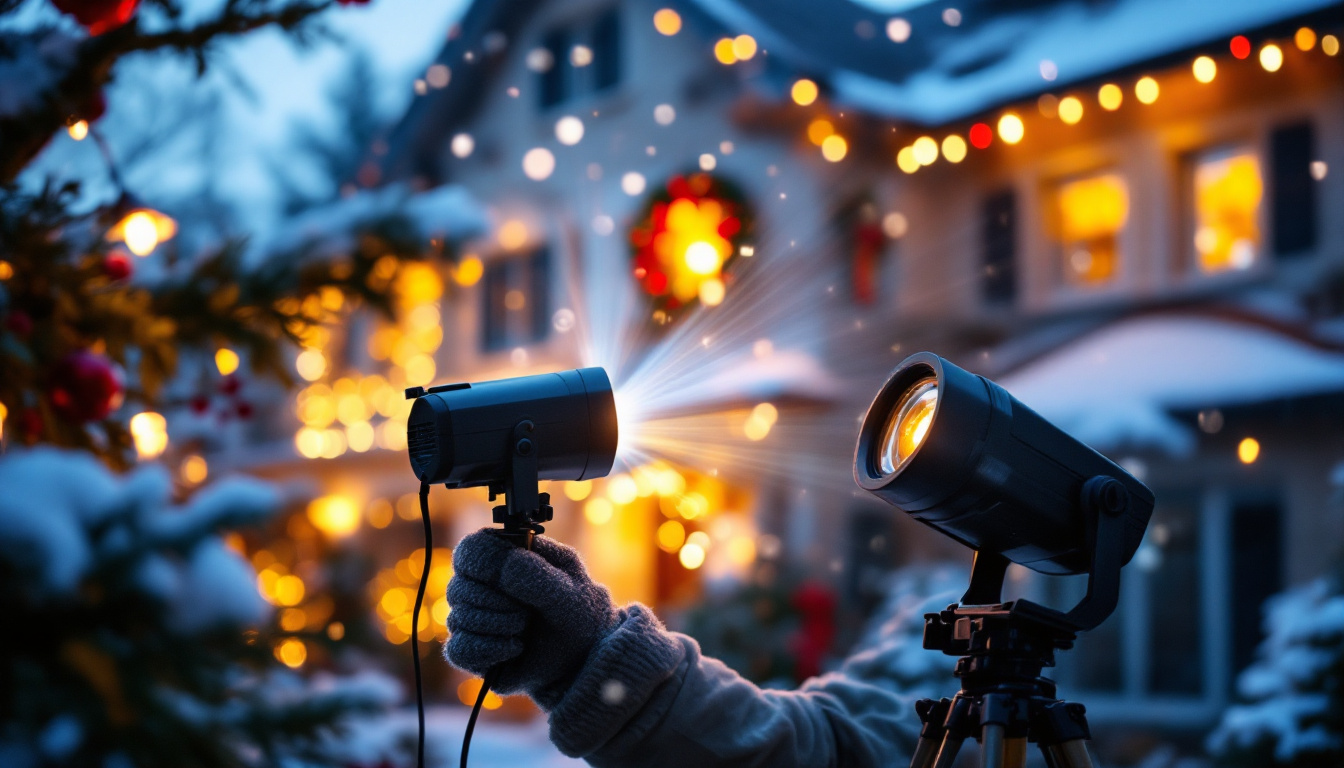
In the ever-evolving world of lighting design, wafer recessed lights have emerged as a popular choice for both residential and commercial spaces. Their sleek design, energy efficiency, and versatility make them an ideal option for lighting contractors looking to enhance their projects. This article explores various hacks and tips for effectively utilizing wafer recessed lights, ensuring that contractors can deliver exceptional results to their clients.
Wafer recessed lights, also known as slim or low-profile lights, are designed to fit into tight spaces where traditional recessed lighting might be impractical. Their shallow depth allows them to be installed in ceilings with limited clearance, making them perfect for retrofitting or new constructions. These lights typically come with integrated LED technology, providing bright illumination while consuming less energy.
One of the standout features of wafer recessed lights is their thin profile. Unlike traditional recessed fixtures that require a housing can, wafer lights can be installed directly into the ceiling, which simplifies the installation process. Additionally, many models offer adjustable color temperatures, allowing contractors to customize the ambiance of a space easily.
Another significant advantage is the energy efficiency of LED technology. Wafer recessed lights consume significantly less power than incandescent or fluorescent bulbs, which not only benefits the environment but also reduces energy costs for clients. This aspect is particularly appealing to homeowners and businesses looking to lower their utility bills. Furthermore, the long lifespan of LED technology means that these lights require less frequent replacement, which can lead to reduced maintenance costs over time.
Wafer recessed lights are incredibly versatile and can be used in a wide range of applications. In residential settings, they are ideal for kitchens, living rooms, and hallways, providing a modern touch while ensuring adequate lighting. In commercial environments, these lights can enhance retail spaces, offices, and conference rooms, creating a welcoming atmosphere for customers and employees alike.
Moreover, wafer recessed lights can be used for accent lighting, highlighting artwork or architectural features, or for general illumination. Their ability to blend seamlessly into the ceiling makes them an attractive option for any design scheme. In addition to aesthetics, the directional lighting capabilities of some wafer models allow for strategic placement that can enhance the functionality of a space, such as illuminating work areas or creating focal points in larger rooms. This adaptability makes them a favorite among interior designers and architects who seek to balance form and function in their projects.
Another noteworthy application of wafer recessed lights is in outdoor settings. Many manufacturers now offer weather-resistant options that can be installed in covered patios, porches, or even exterior soffits. This versatility extends the use of wafer lights beyond indoor environments, allowing homeowners to create cohesive lighting designs that flow from inside to outside, enhancing the overall ambiance of their property. With the right installation, these lights can also improve safety and visibility in outdoor areas, making them a practical choice for both residential and commercial properties.
Installing wafer recessed lights can be straightforward, but there are several hacks that can streamline the process and enhance the final result. These tips can help contractors save time, reduce errors, and ensure a professional finish.
Before beginning the installation, it is crucial to plan the layout carefully. Measure the ceiling height and determine the best spacing for the lights to achieve even illumination. A common rule of thumb is to space the lights approximately 4 to 6 feet apart, depending on the brightness required and the size of the room.
Additionally, consider the color temperature of the lights. Choosing a consistent color temperature throughout the space will create a cohesive look. For instance, warmer tones are often preferred in living areas, while cooler tones may be more suitable for workspaces.
One effective hack is to use template guides for cutting the ceiling holes. Many wafer recessed lights come with a template that outlines the exact size of the cutout needed. By using this template, contractors can ensure precise cuts, minimizing the risk of mistakes that could lead to unsightly gaps or uneven placements.
For added convenience, creating a custom template from cardboard or plywood can be beneficial, especially when installing multiple lights in a row. This allows for consistent hole sizes and placements, speeding up the installation process.
Proper wiring is essential for the successful operation of wafer recessed lights. When installing multiple fixtures, it is advisable to run the wiring in a daisy-chain configuration, which simplifies the process and reduces the amount of wire needed. Ensure that the connections are secure and that the wire gauge is appropriate for the load to prevent overheating.
Using wire connectors that are easy to access can also save time during installation. Consider using push-in wire connectors, which allow for quick and secure connections without the need for twisting wires together. This can be particularly useful in tight spaces where maneuverability is limited.
Designing a lighting plan with wafer recessed lights involves more than just installation; it requires a keen eye for aesthetics and functionality. Here are some design considerations that can elevate a project.
One of the most effective ways to enhance a space is through layered lighting. By combining wafer recessed lights with other types of lighting, such as pendant fixtures or wall sconces, contractors can create depth and visual interest. This approach not only improves the overall ambiance but also allows for greater flexibility in how spaces are used.
For instance, in a kitchen, wafer recessed lights can provide general illumination, while under-cabinet lighting adds task lighting for cooking and food preparation. This layered approach can significantly improve the functionality of the space.
Many wafer recessed lights come with adjustable beam angles, allowing contractors to direct light where it is needed most. This feature can be particularly useful in spaces with varying ceiling heights or architectural features that require focused lighting. By adjusting the beam angle, contractors can highlight specific areas, such as artwork or architectural details, enhancing the overall design.
When planning the layout, consider the activities that will take place in each area. For example, in a reading nook, a narrower beam angle may provide focused light, while a wider beam angle may be more suitable for general illumination in a living room.
As sustainability becomes increasingly important in the construction and design industries, lighting contractors must prioritize energy-efficient solutions. Wafer recessed lights offer an excellent opportunity to promote energy savings and reduce carbon footprints.
When selecting wafer recessed lights, look for Energy Star-rated products. These fixtures meet strict energy efficiency guidelines set by the U.S. Environmental Protection Agency, ensuring that they consume less energy while providing high-quality illumination. By using Energy Star-rated lights, contractors can help clients save on energy costs and contribute to a more sustainable future.
Additionally, educating clients about the benefits of energy-efficient lighting can enhance their satisfaction and encourage them to make eco-friendly choices in other areas of their home or business.
Smart lighting technology is another aspect of energy efficiency that contractors should consider. Many wafer recessed lights are compatible with smart home systems, allowing users to control their lighting remotely or set schedules for when lights should be on or off. This not only adds convenience but also helps to minimize energy waste.
Integrating smart technology into lighting designs can also enhance the overall user experience. For example, clients can adjust the brightness or color temperature of their lights with a simple voice command or through a mobile app, making it easier to create the desired ambiance for any occasion.
While wafer recessed lights offer numerous benefits, contractors may encounter challenges during installation or while working with clients. Understanding these challenges and having solutions at hand can make the process smoother and more efficient.
One of the most common challenges when installing wafer recessed lights is dealing with limited ceiling space. In older buildings or homes with low ceilings, finding the right placement can be difficult. In such cases, consider using surface-mounted fixtures or wall-mounted options that can provide similar lighting effects without compromising headroom.
Additionally, using adjustable or swivel-mounted wafer lights can help direct light where it is needed, even in tight spaces. This flexibility can make a significant difference in achieving the desired lighting effect without sacrificing aesthetics.
Another challenge contractors may face is managing client expectations regarding the performance and appearance of wafer recessed lights. It is essential to educate clients about the capabilities and limitations of these fixtures. Providing samples or mock-ups can help clients visualize the final outcome and set realistic expectations.
Furthermore, discussing the benefits of different color temperatures and beam angles can empower clients to make informed decisions about their lighting design. This proactive communication can lead to greater client satisfaction and fewer misunderstandings during the project.
Wafer recessed lights are a valuable addition to any lighting contractor’s toolkit. Their versatility, energy efficiency, and sleek design make them an ideal choice for a wide range of applications. By implementing the hacks and tips outlined in this article, contractors can enhance their installation processes, improve design outcomes, and ultimately deliver exceptional results to their clients.
As the demand for smart lighting solutions continues to grow, staying informed about the latest trends and technologies will be crucial for contractors looking to stay competitive in the industry. Embracing innovation while maintaining a focus on quality and customer satisfaction will ensure long-term success in the world of lighting design.
Ready to elevate your lighting projects with the sleek and efficient wafer recessed lights? Look no further than LumenWholesale for all your lighting needs. Our commitment to quality and affordability ensures that you have access to the best spec-grade lighting products on the market. Say goodbye to local distributor markups and hello to unbeatable wholesale prices, complete with the convenience of free shipping on bulk orders. Don’t compromise on quality or value; choose LumenWholesale for reliable, high-performance lighting solutions that will impress your clients and enhance your craftsmanship. Wholesale Lighting at the Best Value is just a click away. Experience the difference with LumenWholesale today.

Discover expert insights from top lighting contractors on the latest trends, technologies, and strategies in commercial lighting.

Discover the pivotal role timer switches play in modern lighting solutions for contractors.

Discover essential tips to illuminate your home effectively while steering clear of expensive pitfalls.

Discover how Christmas projector lights can illuminate new business opportunities for lighting contractors.